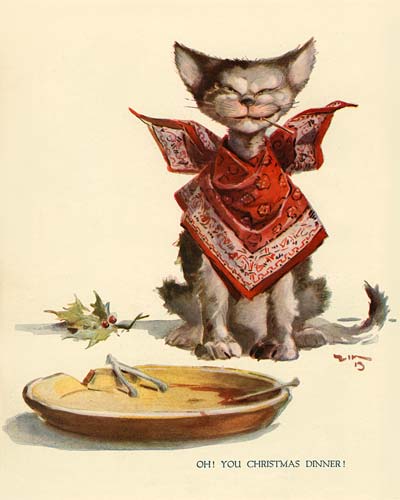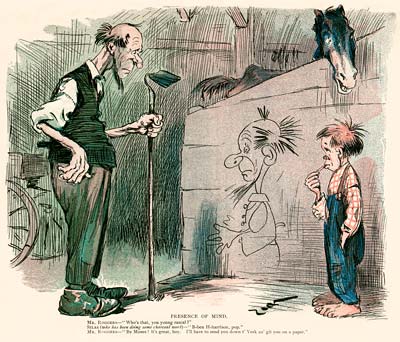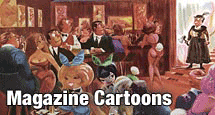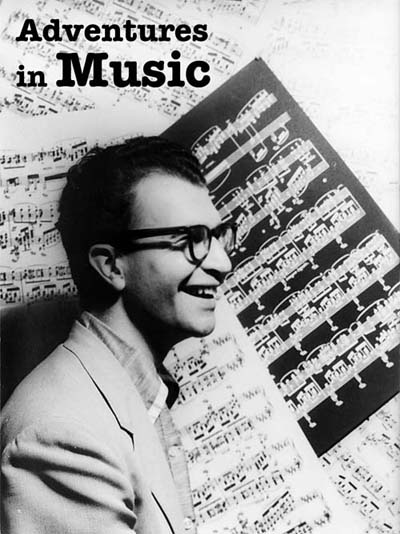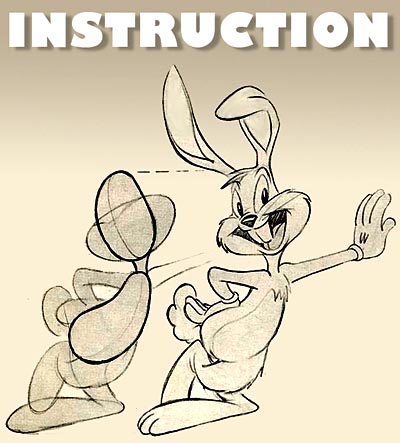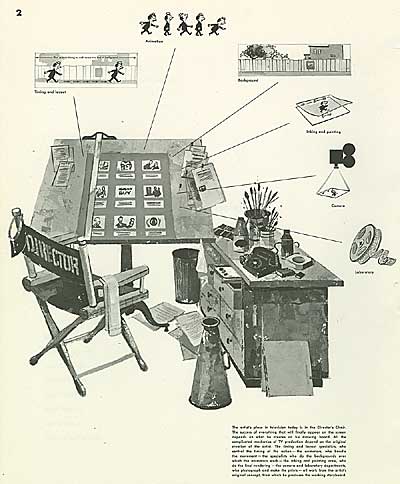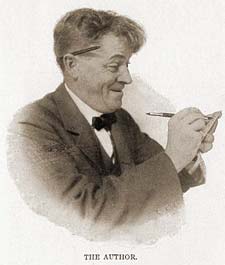
![]() Eugene “Zim” Zimmerman was born in 1862 in Switzerland, and his family emigrated to the United States when he was seven. As a poor immigrant, Zim witnessed the “melting pot” of American culture first hand. His depictions of ethnic minorities were pointed, but honest and well observed. Although he is pretty much forgotten today, he was very well known in his time, and his humor captured the essence of turn-of-the-century America.
Eugene “Zim” Zimmerman was born in 1862 in Switzerland, and his family emigrated to the United States when he was seven. As a poor immigrant, Zim witnessed the “melting pot” of American culture first hand. His depictions of ethnic minorities were pointed, but honest and well observed. Although he is pretty much forgotten today, he was very well known in his time, and his humor captured the essence of turn-of-the-century America.
Zim was the founder of the so-called “Grotesque” school of caricature, and was one of the first caricaturist to incorporate exaggerated cartooniness not only in the faces of his subjects, but in the bodies as well. Zim worked for Puck and Judge, the two top humor magazines of their day.
Zim was a prolific artist, with more than 40,000 illustrations published in his lifetime. He retired from Judge in 1897 and founded the American Association of Cartoonists and Caricaturists. He was also a writer and teacher. His columns ran in Cartoons magazine during the early years of the century, as did ads for his landmark correspondence course in cartooning.
For more biographical information on Zim, see the Animation Resources biographical entry… Eugene "Zim" Zimmerman
ZIM: ONLINE EXHIBIT
- E-Book: Zim’s Correspondence School of Cartooning and Caricature Volume 1
- E-Book: Zim’s Correspondence School of Cartooning and Caricature Volume 2
- E-Book: Zim’s Correspondence School of Cartooning and Caricature Volume 3
- E-Book: Zim’s Correspondence School of Cartooning and Caricature Volume 4
- Zim’s Cartoons & Caricatures Part One
- How To Draw Funny Pictures
- Zim’s Correspondence School in Cartooning, Comic Art & Caricature
- Zim At Judge Magazine
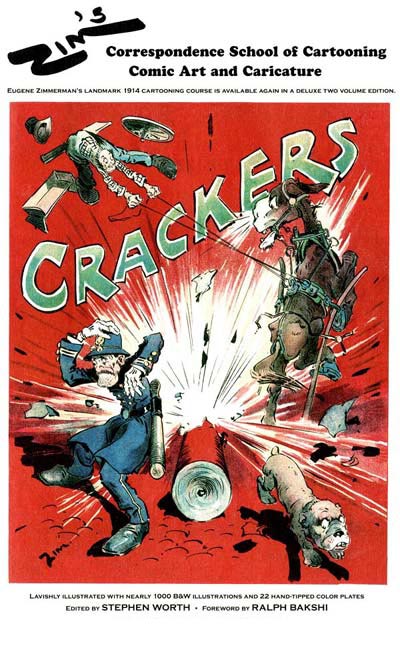
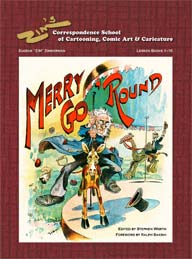
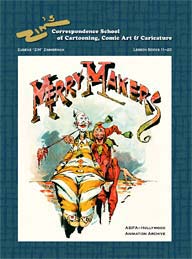
For the first time in nearly a century, Eugene "Zim" Zimmerman’s legendary 1914 cartooning course is available again in a four-volume e-book edition. Lavishly illustrated with nearly 1,000 B&W illustrations and 22 full page color plates, this landmark course deserves a place in every cartoonist’s collection.
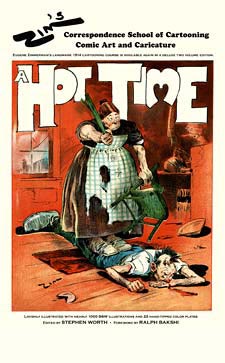
![]() Edited by Stephen Worth and with a foreword by Ralph Bakshi, these books cover a broad range of subjects, from practical advice for aspiring artists to philosophical musings on what it means to be a cartoonist. Zim’s infectious sense of humor and vividly observed caricatures leap off the page. This drawing course may just be the keystone document of American cartooning.
Edited by Stephen Worth and with a foreword by Ralph Bakshi, these books cover a broad range of subjects, from practical advice for aspiring artists to philosophical musings on what it means to be a cartoonist. Zim’s infectious sense of humor and vividly observed caricatures leap off the page. This drawing course may just be the keystone document of American cartooning.
ORDER VOL 1 IN OUR ONLINE STORE!
REVIEWS
Eddie Fitzgerald: Uncle Eddie’s Theory Corner
For a limited time, the three remaining volumes of the e-book edition of the Zim Course are being offered to Animation Resources subscribers as a benefit of membership. JOIN NOW and collect the whole set!
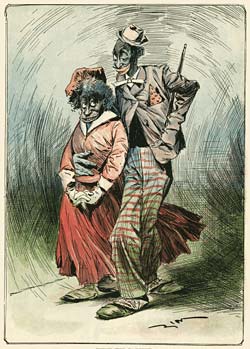
This posting is part of the online Encyclopedia of Cartooning under the subject heading, Magazine Cartoons.














